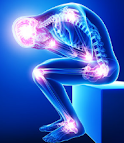The Psychological Significance of Keeping Your Demons at Bay by Turning Them Against Each Other
We all have demons. They are the negative thoughts, emotions, and memories that haunt us. They can keep us up at night, make us feel anxious and depressed, and sabotage our relationships and goals.
But is there a way to keep our demons at bay?
This may sound counterintuitive, but it is actually a very effective way to deal with negative thoughts and emotions. When we focus on the negative, it tends to snowball. One negative thought leads to another, and before we know it, we are completely overwhelmed.
But when we turn our demons against each other, we break the cycle of negativity. We start to see the absurdity of our negative thoughts, and we realize that they are not as powerful as we thought they were.
For example, let's say you are struggling with anxiety. You might have a negative thought like, "I am going to fail this test." This thought can lead to a spiral of anxiety, making you feel more and more stressed and overwhelmed.
But what if you turned that thought against itself? What if you said, "That's ridiculous! I have studied for this test for weeks. I am going to do great."
This simple act of defiance can be very powerful. It can help you see the irrationality of your negative thoughts, and it can give you the strength to overcome your anxiety.
Of course, turning your demons against each other is not always easy. It takes practice and patience. But it is a very effective way to deal with negative thoughts and emotions.
If you are struggling with demons, I encourage you to try this technique. It may just be the key to keeping them at bay.
Here are some additional tips for turning your demons against each other:
- Identify your demons. What are the negative thoughts, emotions, and memories that haunt you?
- Challenge your demons. Ask yourself if your negative thoughts are really true. Are they based on evidence?
- Defy your demons. Stand up to your negative thoughts and emotions. Tell them that they are not going to control you anymore.
- Focus on the positive. When you start to feel overwhelmed by negative thoughts, focus on something positive. Think about a happy memory, or spend time with someone you love.
Remember, you are not alone. Everyone has demons. But you can keep them at bay by turning them against each other.












